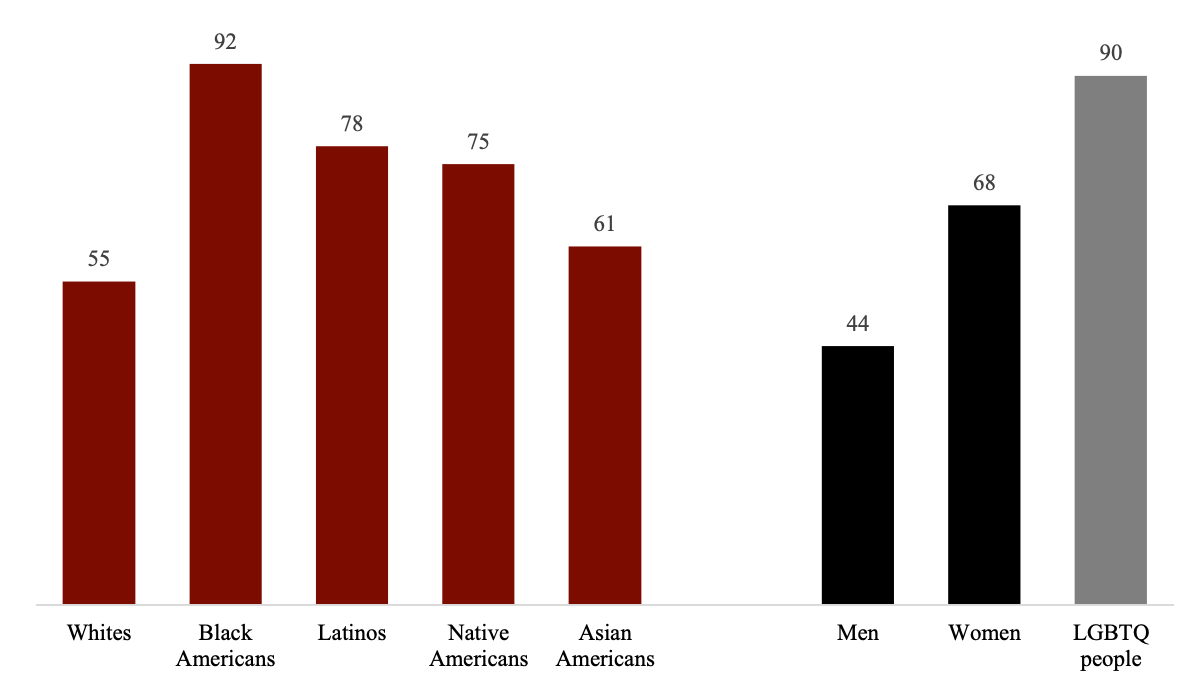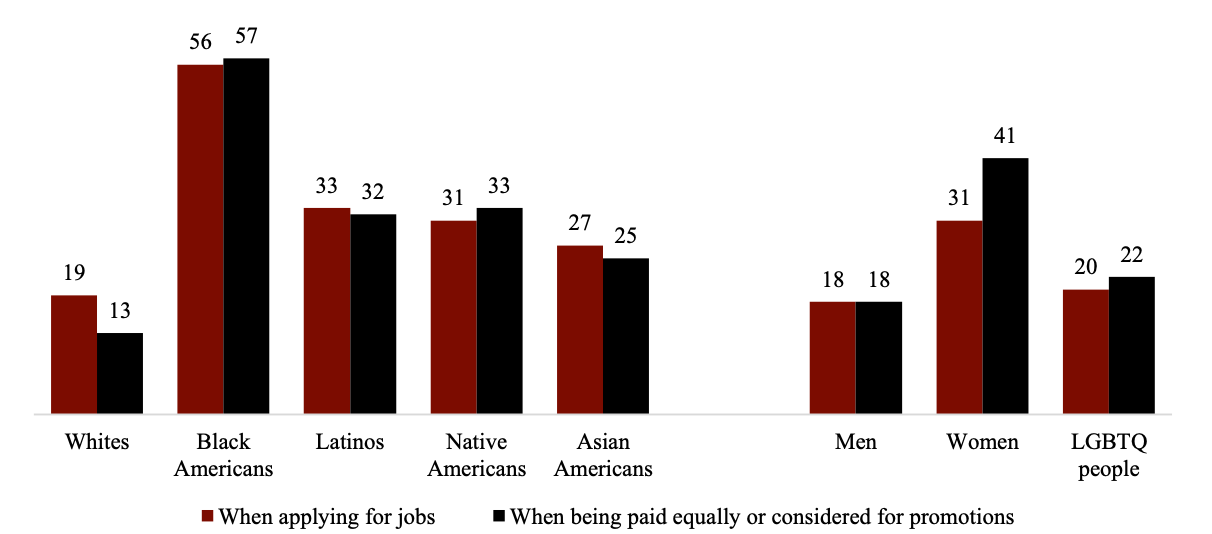In most discussions about migration, the starting point is usually the growing statistics. Understanding changes in scale, emerging trends, and shifts in demographic indicators associated with global socio-economic transformations, such as migration, helps to realize the changing world and make plans for the future. According to estimates for 2019, there were about 272 million international migrants, which corresponds to 3.5% of the world population (Wilkes & Wu, 2019). The important point is that this is a negligibly small part of the world’s population, which means that in the vast majority of cases, it remains the norm to stay in the country of birth. Many people do not migrate, crossing borders – a much larger number of them migrate within countries. At the same time, the number of international migrants has been growing over time, both in quantity and percentage terms, and it is happening at a slightly faster pace than previously expected. Immigrants face employment, healthcare, and housing discrimination, as well as gender and religious discrimination.
The vast majority of people migrate abroad for reasons related to work, family, and study, which implies migration processes that take place mainly without the emergence of fundamental challenges that either migrants themselves or the countries of their arrival could face. Others, on the contrary, leave their homes and lands due to several compelling and sometimes tragic circumstances, such as conflicts, persecution, and disasters (Wilkes & Wu, 2019). Although displaced people, particularly refugees and internally displaced persons, make up a relatively small percentage of all migrants, they often need more help and support than others.
Discrimination is a critically important phenomenon that can have a detrimental impact on the health and well-being of migrants. Immigrants often arrive in the United States without expecting discrimination but are disappointed. Immigrants face various discrimination during their stay in the United States, making it very difficult to assimilate into American society.
In 2018, an extensive survey was conducted among migrants by the Harvard T. H. Chan School (Davis, 2020), indicating the widespread experience of discrimination among many groups in America, as well as significantly different manifestations and experiences of discrimination in other groups. The most common types of discrimination faced by immigrants in the United States are language discrimination and racial discrimination. Despite the efforts made by the American Government to end discrimination, the most recent immigrants still complain of various forms of discrimination. The most frequent cases of discrimination occur when: hiring; when it comes to equal pay or considering promotion; when interacting with the police; when trying to vote or participate in politics; when visiting a doctor or polyclinic; when entering college or while studying at college; when trying to rent a room or apartment or buy a house (Davis, 2020). The primary forms of discrimination are insults or negative words; insensitive or offensive comments or assumptions; people behaving as if they are afraid of them; sexual harassment; threats or non-sexual harassment; violence (Davis, 2020).
As shown in Figure 1, most of the groups analyzed in this survey say they believe discrimination against their group exists in America today. For example, 92% of all black Americans believe discrimination against black people exists in America today. Fifty-five percent (55%) of white Americans believe discrimination against white people exists in America today. Nearly seven out of ten (68%) women say discrimination against women exists in America today, while only 44% of men believe discrimination against men exists (Davis, 2020). A recent study of gender discrimination against migrants in Germany showed that Germans are equally prosocial towards male and female immigrants in non-strategic situations (Gereke, 2020). Nevertheless, they are much less likely to trust immigrant men (not women) in strategic clashes. These results suggest that the gender of immigrants may be an essential factor determining the behavior of the majority of the population, but also warn that (gender) ethnic discrimination may depend on the situation. This is because the outgroup’s bias toward young male immigrants points to the argument that young people are more likely to commit certain heinous and violent crimes (or at least more likely to be perceived as doing so) therefore, they are more afraid of them (Gereke, 2020).

Immigrants in the United States have trouble finding work because of their race and language. The most frequent discrimination cases occur in the workplace, either when hiring or promoting. Most companies in the United States prefer to employ Native Americans rather than immigrants, even if the immigrant is more qualified for a particular job than a local job seeker. It is also worth noting that minority groups report this much more often. As shown in Figure 2, black Americans say cases of discrimination more often than whites, more than four times when it comes to equal pay or promotion (57% of black Americans versus 13% of whites), and almost three times more likely to report racial discrimination when hiring (56% vs. 19%). There is also gender discrimination: women report gender discrimination when it comes to equal pay or considering promotion twice as often as men (41% of women versus 18% of men), and almost twice as usually as men report discrimination based on gender when applying for a job (31% of women versus 18% of men).

The third most frequent situation of discrimination is when interacting with the police. Figure 3 shows that most Americans of color report personal discrimination when interacting with the police, most likely because of their race or ethnicity. Half (50%) of black Americans say they have personally experienced discrimination when interacting with the police – five times more often than white Americans (10%) report this experience. Hispanics (27%) and Native Americans (29%) are almost three times more likely than white Americans to say they have experienced racial discrimination when interacting with the police, and Asian Americans are almost twice as likely (18%) than whites.

The relationship between migrants and the communities in which they live forms an integral and essential part of the migration cycle. These relationships take the form of psychological and sociological adaptation processes between migrants and host communities, which affect the degree of future integration of migrants, including their sense of belonging. To settle in a new community, either temporarily or permanently, migrants may need to adapt to a new culture, customs, social values, and language (Delgado, et al., 2022). The extent to which migrants, in turn, will gradually be involved in the life of society in their destination country also depends on the attitude of the host communities towards them, including their openness to migration and migrants.
The inclusion (social integration) of migrants has always been an essential component of migration; however, today, it is a challenging problem. The growth over the past 50 years in the absolute number of migrants in an increasingly globalized world and the diversification of origin, socio-economic status, and reasons for the migration of migrants have led to tremendous social, cultural, ethnic, and religious diversity in host societies (Kamasaki, 2021). As a result, the impact of migration and diversity on social cohesion has become a significant concern. This is illustrated by the inclusion policy pursued by some States to form stable relations between migrants and host communities and preserve social cohesion (Delgado, et al., 2022). This policy in the field of social integration takes on diverse forms in different countries and reflects social values, including attitudes toward immigration and diversity.
The main problem in helping immigrants to integrate into society is political movements. For example, President Trump used openly racist appeals to justify anti-immigrant policies, but this was not necessary since the immigration system embodies the assumption that today’s immigrants of color do not deserve the privileges granted to previous generations of white immigrants from Europe (Kamasaki, 2021). Legalizing the status of undocumented immigrants whose only crime is that they were doing the same thing as their white counterparts a long time ago, the Biden administration’s immigration plan will help reverse this racial inequality. The Biden plan allows undocumented immigrants who have resided in the United States and have not committed serious offenses to apply for legal status. This would not only help the economy recover — according to the nonpartisan Congressional Budget Office, and similar legislation would reduce the budget deficit by $1 trillion and increase GDP by 3.3% – but simultaneously solve the problem of structural racism in the immigration system (Kamasaki, 2021). All Americans seeking a rapid economic recovery and a racially fairer society should support him.
There is a dynamic and complex relationship between migration and health. Migration can lead to more significant health risks, as in the case of migrant workers working in precarious employment with limited access to affordable health care. Migration may also be associated with improved health – for example, after moving from an environment of persecution and fear of violence to a safe environment. Many migrants seek access to health care. Despite the human rights norms concerning the right to health and the promotion and promotion of higher education for all, States are obliged to provide only a minimum basic package of emergency medical care for illegal migrants. Even legal migrants sometimes face legal barriers, racism, and corruption that hinder access to health care. In addition, migrants often do not use enough medical services and postpone seeking medical help.
It is widely proven that discrimination has a significant harmful effect on health and well-being. In conclusion, discrimination against immigrants is nothing new in the United States and is often motivated by the need of Native Americans to maintain their hegemony. Immigrant groups continue to face discrimination because of their language and race. Immigrants cannot attend certain institutions or work in certain companies because of their identity.
Works Cited
Delgado, Rosite KG, and Qi Sun. “Challenges, Changes, and Choices: Immigrant Academics of Color in American Academia.” Adult Learning vol. 33 no. 3, 2022, pp. 114-122.
Gereke, Johanna, Max Schaub, and Delia Baldassarri. “Gendered discrimination against immigrants: experimental evidence.” Frontiers in sociology, 2020, pp. 59-65
Kamasaki, Charles. Immigration Reform: The Corpse That Will Not Die. Mandel Vilar Press, 2021.
Wilkes, Rima, and Cary Wu. “Immigration, discrimination, and trust: A simply complex relationship.” Frontiers in Sociology, vol. 4, 2019, pp. 32-36.
